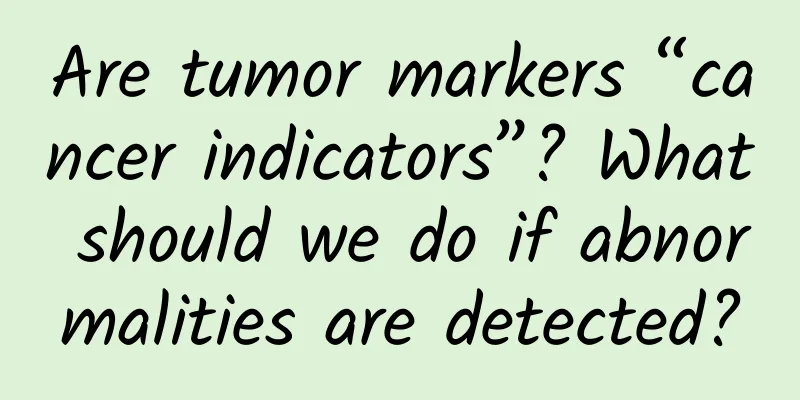All the candies and wines you can eat during the New Year's Day are due to him.

|
Although humans have been making wine for thousands of years, the study of the biological principles of winemaking and related theories such as fermentation has only a two hundred year history. Initially, Western scientists believed that fermentation could only be completed in living cells and that fermentation was just a microscopic life phenomenon. However, after careful research, a farmer's son discovered that fermentation can occur even without living cells. His research promoted the development of fermentation physiology, enzyme chemistry and microbiology, and he was awarded the Nobel Prize in Chemistry for this. Farmer's son and famous teacher One winter day in 1893, Adolf von Baeyer, a professor of chemistry at the University of Munich, received a report from his assistant in his laboratory. The assistant said in the report that he had been studying fermentation for many years but had not made any breakthroughs. He would soon find another laboratory to continue studying enzymes, following the footsteps of his predecessor, Pasteur. He would reduce his support for Baeyer and hoped that the teacher would understand. The open-minded Baeyer signed the report without much thought and asked someone to pass it on to the other party as soon as possible. He knew this diligent student and assistant very well. Von Bayer, winner of the 1904 Nobel Prize in Chemistry (Source: Chemistry Bimonthly) The student and assistant was named Edward Buchner, who came from a farming family. At that time, agriculture was relatively developed in Germany, and little Buchner had hardly suffered much and received a good basic education. Seeing that little Buchner's grades were among the best, his enlightened father was more willing to support his son's education. In 1884, the 24-year-old Büchner was admitted to the University of Munich, where he studied under Professor Baeyer, who was very knowledgeable about organic dyes and aromatic compounds. Later, he went to the University of Nuremberg for further studies, where he studied under chemist Professor Emil Fischer and published a paper entitled "The Effect of Oxygen on Fermentation". He wrote this paper because "fermentation" was a new thing in the chemical world at that time, and there were many researchers. Unexpectedly, he devoted himself to studying this thing for many years and became famous for it. After obtaining his doctorate from the University of Munich, Büchner was appointed by the school as an assistant to Professor Beyer, assisting him in theoretical research and chemical experiments. Büchner worked diligently and would occasionally come up with his own unique insights. All teachers like diligent, obedient and thoughtful students, and Professor Beyer was no exception. So when Büchner asked him to study enzymes, he agreed without hesitation. In fact, Bayer had another idea. He hoped that the young Bichner would take on the tough task of enzyme. After all, although many people were researching it at that time, no one had made any breakthrough progress. Focus on research to break the shackles To be precise, Western scientists had been studying fermentation theory for more than half a century before Büchner. In 1836, German zoologist Schwann discovered that there was a substance in the human stomach gland that could decompose food. He extracted the substance through experiments, which was later called protease. This was the first time that humans extracted enzymes from animals. Western scientists have joined the team of enzyme research. Among the research objects, the most concerned is the yeast that causes bread and alcohol fermentation. Prebiotic enzyme, a type of enzyme (Source: Health Science Network) Twenty years later, in 1857, French scientist Pasteur discovered in an experiment that yeast can convert sucrose into carbon dioxide and alcohol. He called this substance with catalytic ability enzyme. He found in the experiment that when the enzyme was crushed, it would lose its catalytic ability, so he came to a conclusion: enzymes can only play a biological role in living cells. He further pointed out that metabolism is a unique phenomenon of life and can only be completed in living cells. This was the famous "vitalism theory" at the time. Pasteur was a scientific authority at the time, so naturally few people opposed his arguments. Buechner felt that he should calm down and study Pasteur's experiments so that he could have a say. Pasteur, the father of microbiology who proposed the "vitality theory" (Source: Biological Science Network) He conducted one experiment after another on enzymes, but found nothing new. At a gathering of old friends, a businessman said that the concentrated sucrose solution he brewed always went bad, which was a headache for him, and asked Buechner if there was a scientific way to solve this problem. Buechner agreed to give it a try. After returning to the laboratory, he first used physical methods to prepare the yeast extract, and found that this extract caused the accelerated fermentation of sucrose. This made him laugh and cry: Isn't sucrose fermentation and deterioration almost the same? Wouldn't his experiment be in vain? Not long after sighing, Buechner suddenly discovered a problem: there were no living cells in the yeast extract made by the machine. What was it that made the sucrose ferment? Could it be the work of yeast? If so, wouldn’t this contradict Pasteur’s “vital theory”? The new discovery made Buchner extremely excited. In order to prove his hypothesis, he first made a solution containing live yeast cells, then killed the live yeast cells with ethanol and acetone to obtain a new solution. He injected the new solution into sucrose, and the sucrose also fermented quickly. After many experiments, Buchner's results remained consistent. In the winter of 1897, four years after he proposed to Professor Beyer to study enzymes independently, Büchner published a paper titled "Cell-free Fermentation". In this paper, he detailed his experiments on sucrose fermentation, called substances similar to those that catalyze sucrose fermentation "fermentation", and pointed out that "fermentation is not a life phenomenon, and the "vitalism theory" is questionable. At this point, the "vitalism theory" has become untenable in science. Schematic diagram of cell-free fermentation (Source: Bioscience Network) Facts speak louder than words. The article "Cell-free Fermentation" quickly caused a sensation in the academic community. Since then, scientists have a new direction for studying enzymes and fermentation: cell-free fermentation. Büchner's discovery not only broke the shackles of "vitalism", but also laid the foundation for advanced theoretical research such as glycolysis. Many people even believe that the theory of cell-free fermentation has promoted the study of the nature of enzymes, opened the door to enzyme chemistry research, and opened a new chapter in microbial biochemical research. The greatest contribution of the cell-free fermentation theory is sugar production and wine making. It can be said that the various types of sugar and wine we can eat now are all due to Buechner's contribution. Due to his outstanding research on the theory of cell-free fermentation, Büchner won the Nobel Prize in Chemistry in 1907. Since then, many scientists who studied enzyme chemistry have won the Nobel Prize in Chemistry. This son of a German farmer finally proved to the world with his actions the famous saying of Mao Yisheng: "For those who engage in science, diligence is the mother of success." Büchner's Nobel Prize photos and achievements (Source: Biological Science Network) END Tadpole Musical Notation original article, please indicate the source when reprinting Editor/Heart and Paper Original title: "Now you can eat all kinds of candy and drink all kinds of wine, all thanks to him" |
<<: Taking on alpine skiing? Wind tunnel 3D modeling to help
>>: Which came first, the chicken or the egg? Maybe the dinosaur egg came first!
Recommend
WOT lecturer, Taobao mobile technical expert Chen Wu: The big data collection system behind Taobao mobile's billions of UVs
The access to mobile Internet has made it impossi...
With DeepSeek, do I still need to learn writing?
At the end of 2024, on the eve of the launch of t...
RAPOO D5 "three-in-one" experience
In terms of functional expandability, mobile powe...
You need to know these when placing CPD in app stores!
Today we will focus on the relevant matters of CP...
As a community operator, do you still want to stick with it?
I think there is some truth to these three doubts...
Didi Kuaidi was summoned for a talk: Taxi industry reform is going in reverse
The policy relaxation in the private car sector t...
World's first! Submarine-launched hypersonic weapon test-fired, Russia announces successful test-fire of Zircon by nuclear submarine
Some time ago, the Russian Ministry of Defense an...
From cognition to practice, Anshen has seven steps to create a new takeaway store with 9999+ orders
From cognition to practice, seven steps to create...
Activity Calendar丨Reminders for marketing events in April
The most important thing in building a brand is t...
WeChat's anxiety may be more serious than you think
WeChat has been revamped, and many users who upda...
Zhangye WeChat ordering software mini program, how much does the catering WeChat mini program cost?
Everyone is familiar with WeChat mini-programs . ...
After reading this article, you can also pick up meteorites in the wild!
Although I have been doing meteorite research, Bu...
How did Panda Mini Class gain nearly one million fans through fission?
Knowledge payment has been very popular in recent...
Night Grass and Qianlima·A must-have course for beauty industry people to realize short video monetization, medical beauty practitioners account from 0 to 1 to take you on the road worth 3980 yuan
Yecao and Qianlima - A compulsory course for beaut...
Unbelievable! He had gone through so much before getting on the train!
Some time ago Cotton blossoms into a sea of flo...









